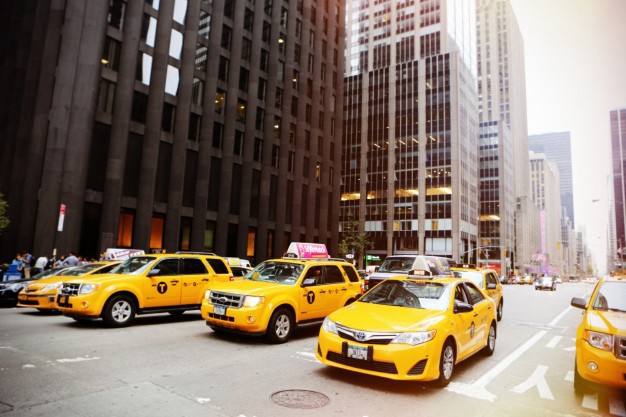Fleet Orchestration: How to Enable Modern Mobility Services with Cloud Software

The lockdowns caused by the pandemic have had a dramatic impact on public and private transportation. All services have seen ridership and revenue plummet. A silver lining in this scenario is that cities, with traffic suddenly disappearing, seem keen to keep the change. Many are creating personal-car-free zones that could open the door for flexible on-demand services that can more efficiently move passengers to minimise car traffic. Using data, automation, and cloud-based fleet orchestration platforms, on-demand taxi, and private hire can offer these ultra-efficient services.
A Blank Slate
New services may not look much like the old services. First of all, distancing and cleaning requirements will require new hygiene best practices for vehicles. But the services can also be different — more efficient and more flexible. The opportunity exists for mobility providers to use cloud-based demand forecasting and dynamic routing to match vehicles with demand proactively.
Peer-to-peer ride-hailing made traffic worse in cities by flooding the streets with vehicles that were empty much of the time. The business model frustrated authorities, passengers, and drivers. Taxi and private hire service providers can’t afford to oversupply cities with vehicles because they own the vehicles and pay the drivers by the hour, not by the ride. New services will have to focus not just on convenience but also on fleet efficiency and utilisation.
Cities now have a blank slate on which to design new services. Taxi and private hire companies can seize the opportunity to use technology to design and implement services that provide passengers with the convenience they demand, operators with the utilisation rates they must meet, and cities with the reduced congestion they require.
The fleet orchestration technology for this transformation exists. “Routes and ride requests can be matched in real-time to move more people with fewer vehicles,” said Dominik Janik, CEO of Czech taxi company ProfiMobility. This “makes it possible to continuously optimise fleet performance in real-time and to always send the right car to the right passenger at the right time.”
Design with Data
The key to a sustainable mobility service for fleet owners is to use data to match supply and demand. Demand data can come from many sources — for example, from public transit operators to third parties as Transport for London(TfL)has done. The goal is to understand where ride requests originate and end throughout each day. Critical data for each service includes trip requests, locations of trip requests, trip times, trip length, ride times, excess ride times when pooling, and more.
This information makes it possible to understand what kind of capacity will be needed, where, and when. This knowledge enables service providers to determine the right number and locations of vehicles needed to deliver prescribed passenger service levels such as wait time and ride times, and operator utilisation requirements to ensure profits.
Automating Operations
Operations can be automated by using algorithms that make dispatching, ride matching and routing decisions, and using machine learning to update decisions based on historical and real-time data as the service is used. The algorithms receive ride requests with trip origin, destination, number of passengers, and traffic data, and send the right vehicle the right mission based on current conditions and future projections.
Automated operations give mobility providers and passengers much needed certainty about how a mobility service will perform, and the ability to constantly improve service performance over time. This is critical for cities looking to control congestion while offering residents and visitors a predictable, convenient experience. The ability to automate operations also opens the door for taxi and private hire companies to offer new or improved options like pre-booking and pooling without increasing dispatching personnel.
Getting There from Here
Shifting to data-driven, automated on-demand services at scale requires a robust, cloud-based fleet orchestration platform that provides the means by which operators can continually monitor, update, and manage fleet performance. Fleet orchestration platforms enable providers to design and continually optimise service performance, dynamically matching passengers with drivers/vehicles while giving operators an interface that can be used to control passenger and operator constraints.
The travel data gained by using mobile apps to book and pay for rides enable fleet orchestration solutions to get smarter as they learn demand patterns. The orchestration engine analyses real-time and historical demand and automates dispatching while continually reallocating drivers and vehicles to deliver the most efficient service.
The Future is Flexible
Cities with cleaner, quieter streets, reduced traffic, and sustainable, convenient transportation stand to be the positive changes that emerge from the pandemic. It may be especially positive for taxi and private car service providers ready to provide these services. Demand patterns are uncertain as cities re-open, with redesigned city centres, more people working from home, and the possibility that future full or partial shutdowns shock the systems again. Fleet orchestration technology gives operators the flexibility needed to design new services and to adapt to changing demand patterns as conditions change.
This article was originally published at prodrivermags.com
The dramatic impact on both public and private transportation caused by the pandemic… was originally published in Bestmile on Medium, where people are continuing the conversation by highlighting and responding to this story.
